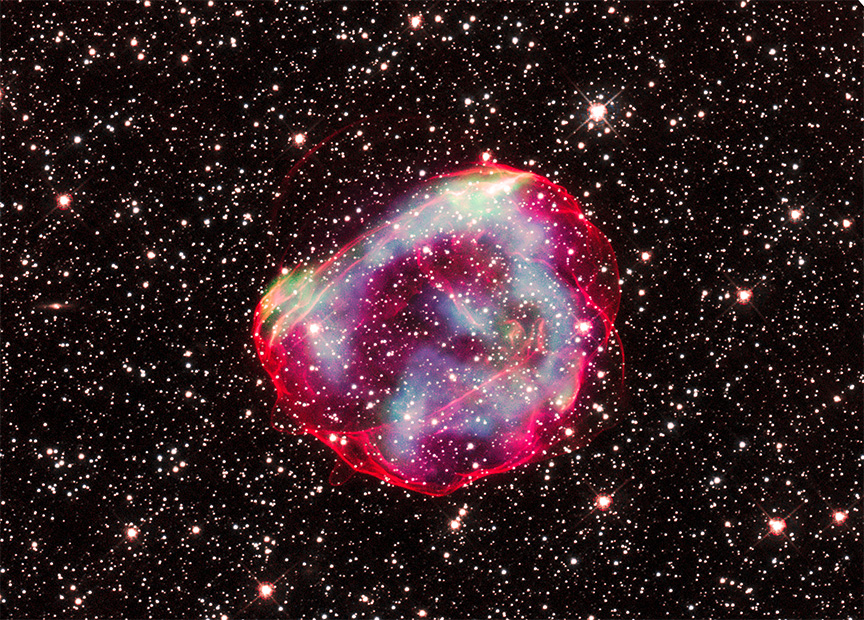
The stars we see forming in Orion today will generally go on to live millions to trillions of years. The length of a star’s life is determined by its mass and its environment. A star like our Sun, for instance, will eventually stop generating energy using fusion, and when its nuclear reactor turns off, the entire star will collapse down into a white dwarf roughly the volume of the Moon. The white dwarf is extremely stable and could hang out, cooling off, essentially until the end of time. The catch is that it can only do this in isolation.
If a white dwarf has a companion that gets too close, it will gravitationally tear off that companion’s outer layers and increase in mass until it becomes unstable and explodes as a supernova. In a new image from Chandra, the delicate cloud of material from such a supernova shines in X-ray and optical light. The original white dwarf exploded 670 years ago, and today, its shock waves continue to expand outward at rates from 3.8 to 5.5 million miles per hour. This rate is slowing over time as the blast pushes out more and more material.
These images and the physics of the nearby explosion are discussed in a new paper in The Astrophysical Journal, led by Brian Williams. Someday, the clouds of compressed material, enriched by the supernova’s heavy elements, will become the building blocks of future generations of stars.
More Information
CXO press release
“Evidence for a Dense, Inhomogeneous Circumstellar Medium in the Type Ia SNR 0519-69.0,” Brian J. Williams et al., 2022 August 18, The Astrophysical Journal




 Join the Crew!
Join the Crew!
 Escape Velocity Space News
Escape Velocity Space News
0 Comments